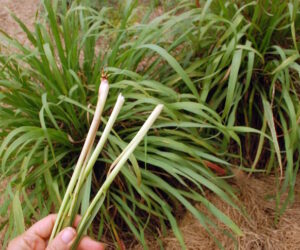So, you own a septic system, and you want to ensure you are looking after it properly. Well, you have come to the right place. Septic systems handle household wastewater in an environmentally-friendly and efficient manner when properly used and maintained. These underground waste management systems are also low-cost. That being said, you need to know the do’s and don’ts of having a septic system so you can ensure it continues to function smoothly while protecting the environment and your personal expenses.
Let’s dive into this brief but useful guide to the top 7 do’s and don’ts of septic care so that you can manage your septic system with ease.
The Septic System
If you are looking into the world of septic system care before moving to a house that has a septic system, here is a quick explanation of the whole septic system and waste management process.
In a nutshell, wastewater from sinks, toilets, showers, and other household drains flows into the septic tank, where it undergoes a separation process. The solid waste settles at the bottom of the tank as sludge, while the lighter materials like oils and grease float to the top as scum.
The relatively clear liquid, known as effluent, remains in the middle. The effluent then flows out of the tank through an outlet pipe and into the drainfield. The drainfield is a network of pipes buried in gravel-filled trenches in the soil. The water is evenly distributed across the drainfield and undergoes further purification in the soil.
1. Do: Implement Water-Saving Techniques
If you use an excessive amount of water every day, you are likely to overwhelm the septic system, leading to it failing. The best way to avoid overloading the system is to implement water-saving techniques. Do not run your washing machine or dishwasher several times a day, or every day of the week – allow time between loads for the system to regulate itself. Moreover, opt for low-flow toilets and showerheads, as this can reduce the strain on the system. If you find leaks in your home, fix them promptly to avoid water waste.
2. Do: Maintain Your Septic System Regularly
If you want your septic system to function efficiently and avoid system failure, you should make sure to book regular system checks. Your septic system should be pumped every three to five years to avoid costly repairs. You can find out more information on septic tanks and maintenance checks from professional septic system companies online. Always listen to the experts when it comes to the maintenance of your home systems, as they can incur huge costs when left to deteriorate.
3. Do: Explain The Rules To Family Members And Guests
There are many rules, or “don’ts” when it comes to septic system care and management, and you should make them clear to all of your family members and friends who visit or live in the house with you. Either verbally communicate these rules or make a simple list of them and put it on the wall next to key appliances, such as the washing machine and toilet. These rules are all essential to maintaining the proper working function of the septic system, so they should be made clear.
4. Don’t: Flush Non-Biodegradable Items
One of the most important rules of all is not to flush non-biodegradable items down the toilet. Common non-biodegradable items that tend to be flushed down toilets include feminine sanitary products, wet wipes containing plastic, and diapers. These items can cause a clog in the pipes, leading to expensive repairs. You should only flush human waste and toilet paper down the toilet in a house with a septic system.
5. Don’t: Pour Grease Or Oil Into The System
When you are cooking, never pour cooking oil, grease, or meat fats down the kitchen sink. These substances are likely to solidify in the septic tank, clog the pipes, and interfere with the natural breakdown of the wastewater. Even if you pump the system regularly, grease can cause big problems. Instead, you can wait for the hot grease to cool and solidify and put it in the trash, or else bottle it and dispose of it if the grease remains liquid.
6. Don’t: Introduce Harsh Chemicals Into The System
Another liquid that is not to be poured into drains or down the toilet is bleach. Bleach and other harsh chemicals can significantly mess with the proper functioning of the septic system. The septic system is home to beneficial bacteria that break down the wastewater. When you introduce bleach or drain cleaner into the system, these bacteria can be harmed, leading to a dysfunctional septic system. Instead, you should use more natural and bio-friendly alternatives like baking soda and vinegar.
7. Don’t: Plant Trees Near The Drainfield
Finally, this one might not be as intuitive as the other do’s and don’ts. You should take care not to plant trees or shrubs in and around the drainfield. While adding large plants to the garden adds an aesthetic touch to the home and disguises the septic tank area, the large roots can be damaging to the drainfield. Ensure that trees are planted at least thirty feet from the drainfield to avoid the infiltration of roots in the pipes and trenches of the drainfield. This is the best way to ensure the purification process is left untouched.
It is clear that to properly manage a septic system, you need to understand the rules and be responsible with your waste management. Make sure to implement water-saving techniques and have regular maintenance checks on your septic system. What’s more, you should explain all septic system rules to anyone else who lives in the home or visits. This can avoid mistakes that clog up the system, requiring expensive repairs.
The rules include not flushing non-biodegradable items, not pouring oil or grease into the system, not introducing bleach or other harsh chemicals into the system, and not planting trees or bushes around the drainfield. If you follow these simple but effective rules, you will be able to maintain a functional, practical, and money-saving septic system.



